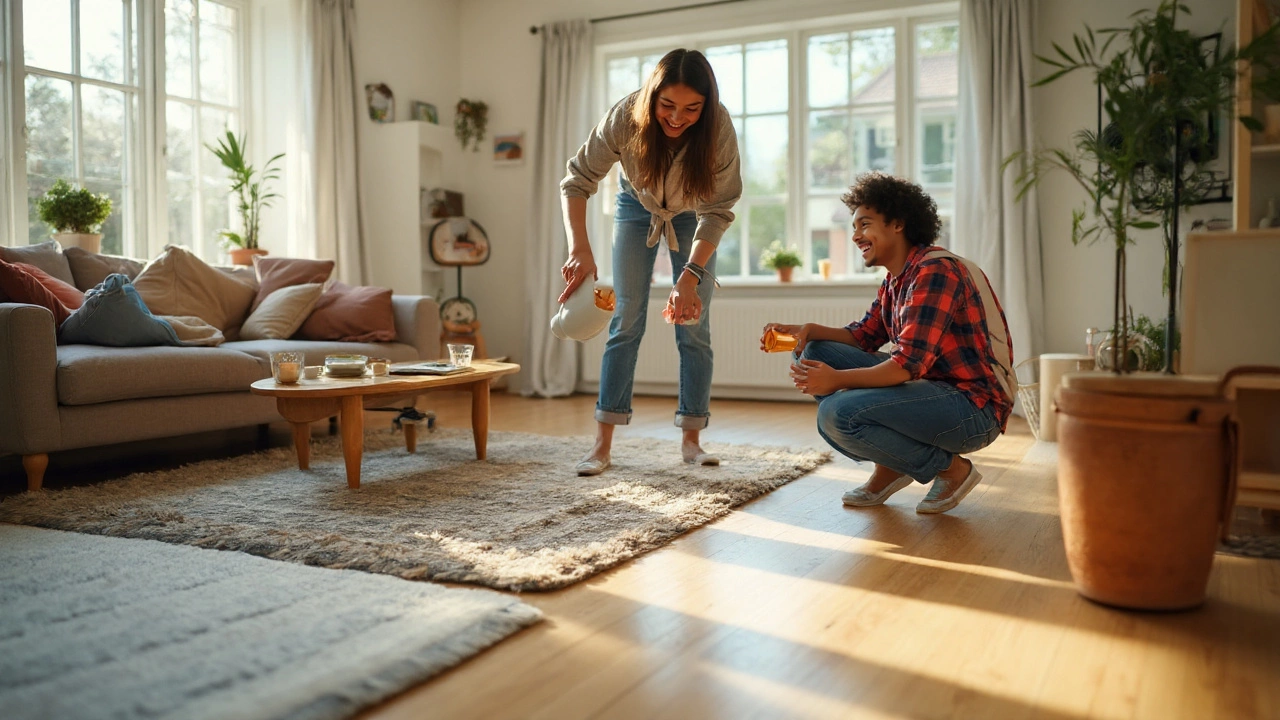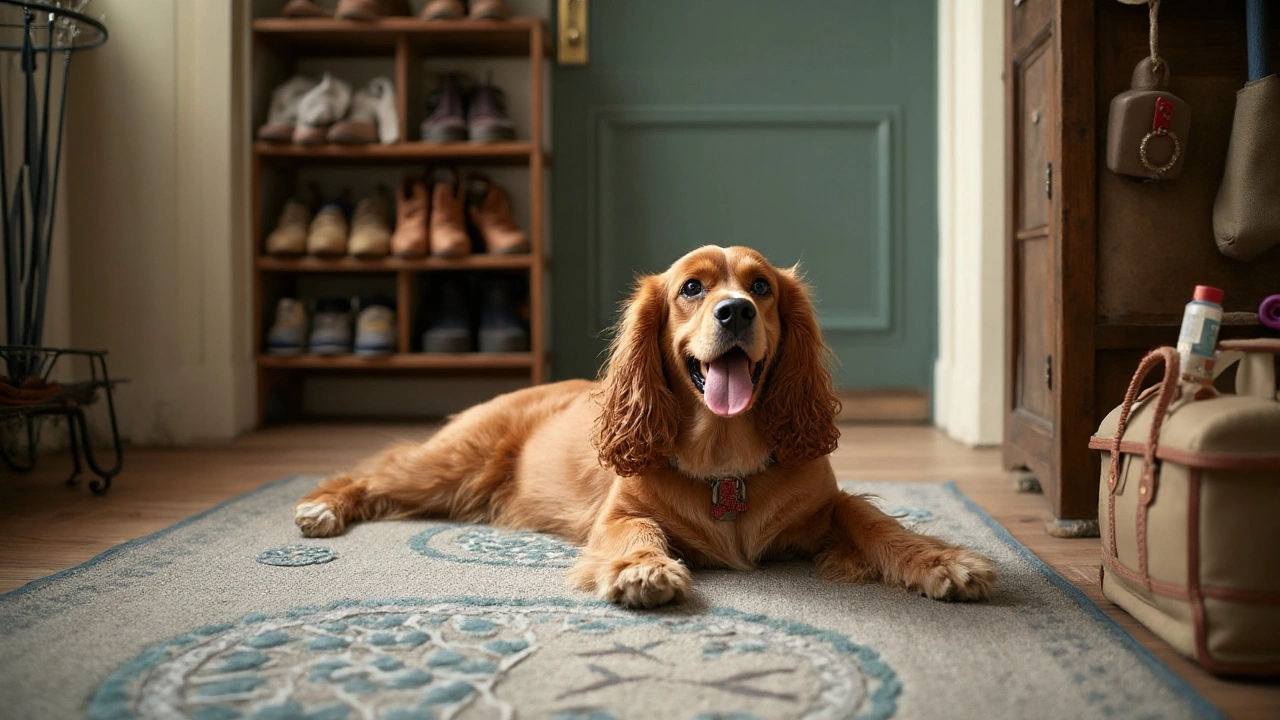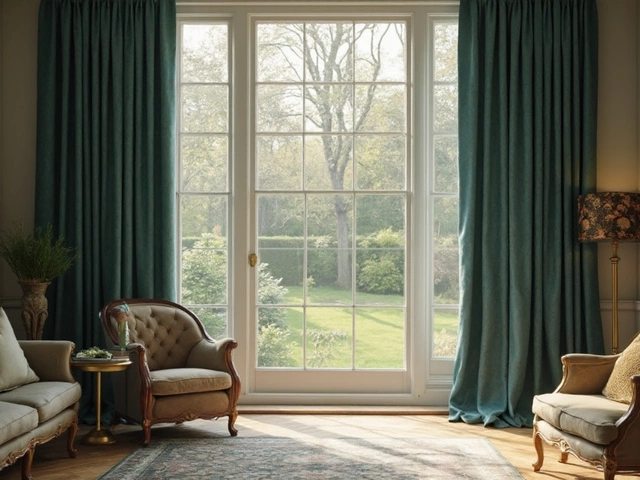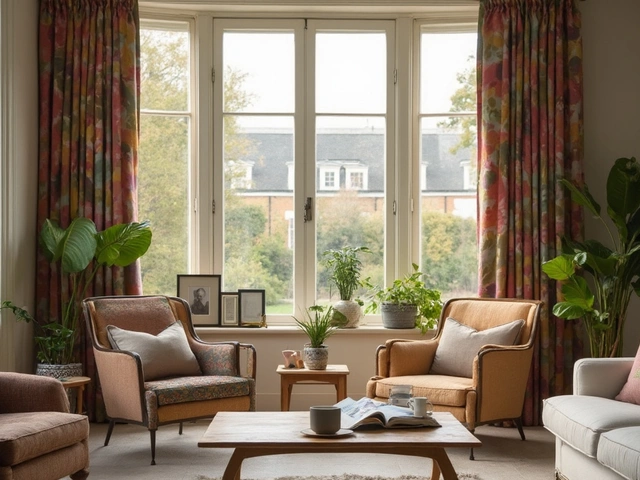Easiest Rugs to Keep Clean: Choosing Low-Maintenance Floor Coverings

Spilled coffee, muddy footprints, tufts of cat hair—I’ve seen (and cleaned) it all. Rugs bring warmth and character, but some act like magnets for dirt and stains. Others make you want to throw in the towel after one week with a pet or kid. If you want to spend weekends enjoying your home, not attacking carpet with dubious miracle sprays, the type of rug you choose seriously matters. So, which rug is easiest to keep clean? I’ve looked into fibers, construction, and even colors, to break down exactly what you should look for.
Understanding Rug Materials: Fiber Matters Most
The biggest difference between a rug that always looks grimy and one that stays fresh is the fiber. Certain materials shrug off stains and grime far better than others. Synthetic fibers like polypropylene (also called olefin), nylon, and polyester lead the pack in low-maintenance. They’re engineered to resist moisture, mold, and even oily spills. A quick vacuum or a damp cloth wipes most messes away without drama. Polypropylene, in particular, doesn’t absorb water, making it a star around kids, pets, and anyone who’s ever upended a juice box. According to data from the American Cleaning Institute, polypropylene rugs take about 50% less time to clean than natural fiber options.
How about natural fibers? Wool has a great reputation—sure, it bounces back from footprints and is naturally stain-resistant to an extent (fun science: wool fibers have a microscopic wax coating that repels liquid for a while). But, wool gets fussy fast if left damp, and standard cleaning rules don’t always cut it. Cotton looks homey and feels soft but it absorbs everything, and stains can stick around unless you wash it right away—helpful if you have a washing machine that can handle larger rugs.
Let’s not forget bamboo, jute, sisal, and seagrass, which win style points for natural vibes. Still, they struggle with real-life messes, especially liquids. Jute and sisal in particular act like sponges: even a spilled glass of water can leave a stain behind. Bamboo is a bit more forgiving but is best for dry indoor spaces.
Here’s the short version: for serious spill-resistance and quick cleanup, synthetics like polypropylene top the list. Wool is a strong runner-up for everyday dust and traffic. If you love the look of natural fibers, stick with spots away from food, pets, or messy hobbies—that’s not a rule, but a survival tip.
| Rug Fiber | Cleaning Difficulty | Best For | Stain Resistance |
|---|---|---|---|
| Polypropylene | Very Easy | Living rooms, playrooms, any high-traffic area | Excellent |
| Nylon | Easy | Bedrooms, hallways | Very Good |
| Polyester | Easy | Colorful spaces, bedrooms | Good |
| Wool | Moderate | Living rooms, bedrooms (low-pet, low-mess) | Good (but not for heavy messes) |
| Cotton | Moderate | Casual/moisture-free areas | Medium-Low |
| Jute/Sisal | Challenging | Dry indoor areas | Poor |
If you have allergies, this is worth knowing too: synthetics trap fewer allergens, and a vacuum with a HEPA filter makes regular cleaning ridiculously simple. Don’t worry about the “plastic” feel—most modern synthetics are soft enough for bare feet. And if Luna the cat gets the zoomies and drags half the garden inside, you’ll thank that sturdy polypropylene weave.
Construction and Pile: Less is More When Cleaning
The fiber isn’t everything. The way a rug is constructed decides how hard you’ll work come cleaning day. Rugs with a low pile (think flatweave or short loops) don’t hold onto dirt or pet hair, so your vacuum doesn’t wheeze in protest after two minutes. Flatweave rugs—made with little to no pile—are the MVP if you want to sweep, beat outdoors, or toss in the washer. Apartment owners with rambunctious pets swear by outdoor rugs inside because they’re basically mess-proof and can handle harsh scrubbing or even a hose-down.
Shag rugs or high pile might look plush, but every single crumb, hair, and mystery fluff finds a permanent home between those deep fibers. Even a robot vacuum gets lost. Unless you love lint rolling and spot-treating every few days, skip the shags for easy care. Low-pile and flatweave rugs also dry fast, so if you need a quick wash or spot treat, mold and odors don’t stand much of a chance.
Another trick: bound edges and a durable backing. Rugs that have tightly finished sides, and a backing that resists curling and water absorption, keep their shape after lots of cleaning. Loose, fringed edges pick up dirt faster and tangle in vacuum cleaners (and, in my house, attract cat claws). To keep things simple, choose rugs with hemmed or serged edges.
Check if the rug is labeled “machine washable.” Those are popping up everywhere, and for good reason. If you can fold and fit your rug in a standard washer, cleanups become a non-event. Ruggable and similar brands have exploded in popularity—people post photos online of rugs that survived pet accidents, spilled wine, and even art projects, all because machine washing does the heavy lifting.
- Flatweave (cotton, polypropylene, wool): Lightweight, no pile, ultra-easy to sweep or vacuum
- Low-pile loop (nylon, polyester): Traps much less debris, resists getting crushed by furniture
- Shag/high-pile: Comfortable, but a challenge to keep truly clean
- Machine-washable: Best for families, pets, or anyone who wants real-life mess resilience
The flipside? If you do love plush rugs, spot treat quickly and vacuum regularly. Invest in a vacuum with adjustable height—this lets you get deeper into the pile without damaging fibers. And, keep a small carpet shampooer on standby for emergencies. The less you let dirt settle, the easier your life will be.

Color and Pattern: Hiding Mess Like a Pro
Color and pattern won’t magically stop messes, but the right choice hides day-to-day dirt way better. Solid, dark colors look smart until that stray lint or pet fur piles up—then every crumb is in the spotlight. Busy patterns and multi-tone weaves win when you want to mask light stains or footprints. I’ve found mid-tones, and traditional Persian- or Kilim-style patterns, are perfect for distracted cleaners, because they hide a little bit of everything. Small-scale prints work well in entryways or family rooms where dirt just happens.
Light neutrals and brilliant whites look beautiful in magazines, but if you love crisp white rugs, just accept you’ll be washing or spot-cleaning more—no matter the fiber. In kitchens or under dining tables, opt for a rug with enough color and pattern action to make a dropped crumb or splash less obvious. For homes with animals (cat owners, I feel your pain), match the rug to your pet’s fur. Luna is mostly grey, so a grey-blue rug saves me from sweeping constantly. Strategic, right?
Another sneaky tip: select rugs with slight texture or heathering. Herringbone, micro-chevron, or tweed looks will break up stains and delay the "must clean now" panic. Just skip high-contrast white borders, since those stain easily, and go for rug pads that stop slippage to keep the dirt from settling underneath.
Patterns and tone-mixed fibers also hold up visually between deep cleans. This doesn’t mean you’ll never have to vacuum again, but you’ll feel a lot less pressure to keep things pristine every single day.
Smart Cleaning Tips and Top Picks for Real Homes
So, which rug is the easiest to keep clean, based on the science and real-life messes? If you want no-fuss, synthetic fiber rugs (polypropylene, nylon) with a flat or low pile, sealed edges, and a forgiving pattern are the *strong* stars. Machine-washable designs add a layer of stress-free magic, especially with pets or kids in the mix. Wool comes close for slightly fancier spaces if you want the natural feel, provided you tackle stains quickly and keep it dry.
Here are a few cleaning hacks that people with spotless-looking homes actually use:
- Vacuum high-traffic zones twice a week, elsewhere at least weekly. For pet owners, daily in shedding season—your future self will thank you.
- Blot, don’t rub, liquid spills; use paper towels or a clean cloth right away.
- Dilute mild soap with lukewarm water for most synthetic fibers. Test on a corner before attacking the stain center stage.
- Flip and air rugs outdoors every two months. UV light helps freshen and even kills dust mites.
- For machine-washable rugs, use gentle cycles and air dry flat to stop shrinking. Check the care label first—never just wing it.
- Add a rug pad to catch crumbs, stop slipping, and make vacuuming easier.
- If a pet marks territory, use an enzymatic cleaner right away—these break down organic messes that soap simply can’t.
If you want brand names that come up a lot in reviews: Ruggable (for fully washable runners and mats), IKEA Lohals (surprisingly durable, easy to vacuum flatweave, though not for wet spills), Safavieh’s Evoke collection (polypropylene, big on patterns and easy cleanup), and Mohawk Home for budget-friendly synthetics. Check return policies so you don’t have to commit to a dust magnet.
Here’s a quick reference guide for the most common situations:
| Home Situation | Best Rug Type | Material | Easy Clean Rating |
|---|---|---|---|
| Busy family with pets & kids | Machine-washable, flatweave, indoor/outdoor | Polypropylene, polyester | ⭐⭐⭐⭐⭐ |
| Minimalist, modern apartment | Low-pile, bound edges | Nylon, wool-blend | ⭐⭐⭐⭐ |
| Allergy or asthma needs | Flatweave, synthetic, machine washable | Polypropylene, nylon | ⭐⭐⭐⭐⭐ |
| Style-first formal living room | Hand-tufted wool, subtle pattern | Wool | ⭐⭐⭐ |
It’s not always about the most expensive rug, either. A $80 rug, chosen smartly, can last just as long and stay cleaner than a $500 high-pile designer splurge. And with today’s washable options, you don’t have to stress about a surprise salsa spill or muddy paw prints again.
Bottom line—if you want “set it and forget it” style, look for a easiest rugs to clean solution: synthetic fibers, low pile, bold pattern, simple edges—and make sure the rug can take a real-world beating. Your future self (and your cat) will appreciate the extra free time.





